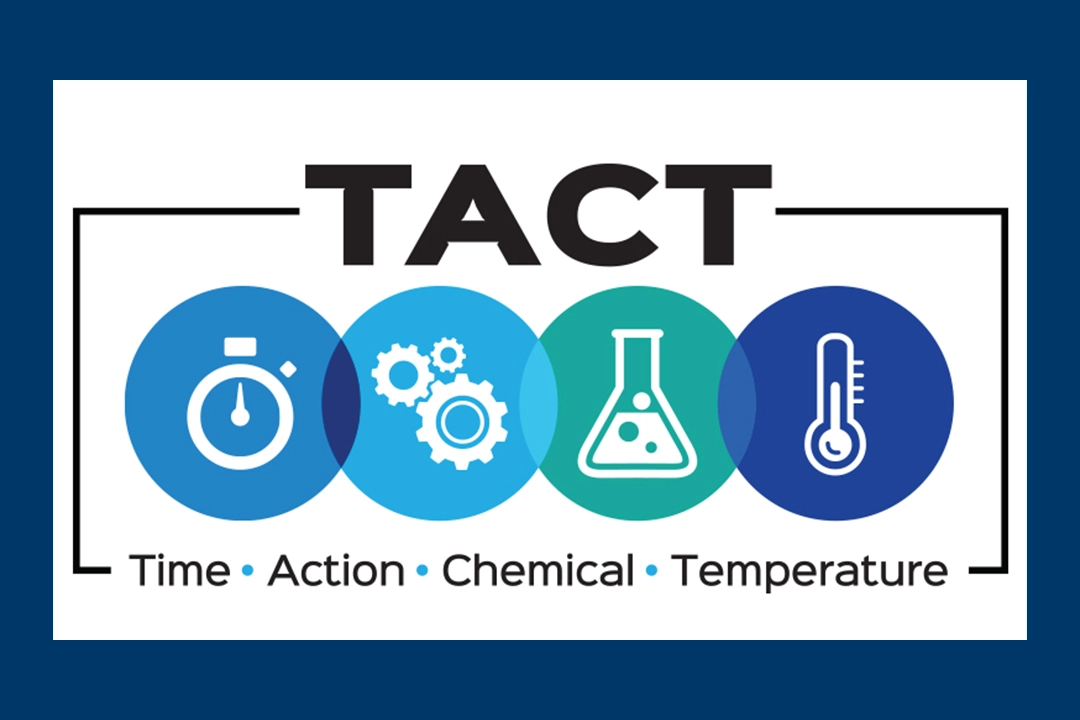Sani-Matic recently helped a beverage processing company in the southwestern part of the country cut nearly a quarter of its clean-in-place system cycle time. More to the point, this meant a 25% reduction in lost production time costs.
Each cycle includes a pre-rinse, wash, post-rinse and sanitizing step. In this case, the company’s pre-rinse and post-rinse steps were set to run 10 to 15 minutes each. After the Sani-Matic Tactical Solutions group conducted a system analysis at the customer’s request, steps were put in place that reduced overall rinse cycle time by 13 to 15 minutes.
“Our customer was running a 15-minute pre-rinse step to remove bulk solids from a tomato juice line,” Tactical Solutions Manager Micah Muller said. “During our observations we saw the red color in the lines dissipate rather quickly, so we were able to shave seven minutes off the initial pre-rinse time.”
The clean-in-place system post-rinse time was also reduced.
“The goal of a post-rinse is to remove any clean-in-place chemical residue left behind in the lines from the wash step,” Muller explained. “They had the post-rinse set for 10-minutes. We grabbed samples at various times to test for remaining chemicals in the rinse water. As a result of our findings, we were able to cut another 5 minutes from the cycle.”
Muller explained these cuts in cleaning time lead to great savings.
“For beverage processors, depending upon how big the filler system is, an hour of production may be worth $5,000 or more. When you stop production for an hour to clean, that is a significant loss. So, although shaving 15 minutes from cleaning cycle may seem small, it translates to a 25% reduction in lost production time or a $1,250 savings. If a company is running three to four cleaning cycles a week, that can add up quickly,” he said.
Muller detailed many benefits of conducting a field evaluation on a CIP process. Here are his top 5:
- Ensuring a sanitary clean.The goal is to get a complete and sanitary clean throughout the process lines. A system analysis helps ensure this is achieved and gives operators confidence their process is yielding high-integrity product.
- Optimizing for time savings to generate dollar savings.Sani-Matic system evaluations are designed to identify areas within the sanitation process that can be optimized for increased production and substantial cost savings.
- Conserving chemical and water use.This is especially significant if a company handles its own wastewater treatment on-site. Reducing the amount of chemicals used in the cleaning process means minimizing what needs to be neutralized with water dilution or chemicals prior to sending the solution to the drain.
- Identifying process errors.Clean-in-place system programming and installation errors can lead to inefficiencies and unsanitary results. Programming errors can cause incorrect process valve pulsing and sequencing, which may send cleaning solution down the wrong flow paths or release excessive amounts of heated solution to the drain. Installation errors such as incorrectly installed valves, process dead legs, non-uniform pipe sizes, etc. may result in unsanitary lines and bacterial contamination risk.
- Identifying maintenance issues.Sometimes evaluations uncover maintenance issues with the sanitary cleaning equipment, such as valve seal and gasket failures and chemical hose leaks, which pose safety hazards and eventual production loss.
Sani-Matic’s Tactical Solutions group performs evaluations on any CIP system, regardless of the original manufacturer.


